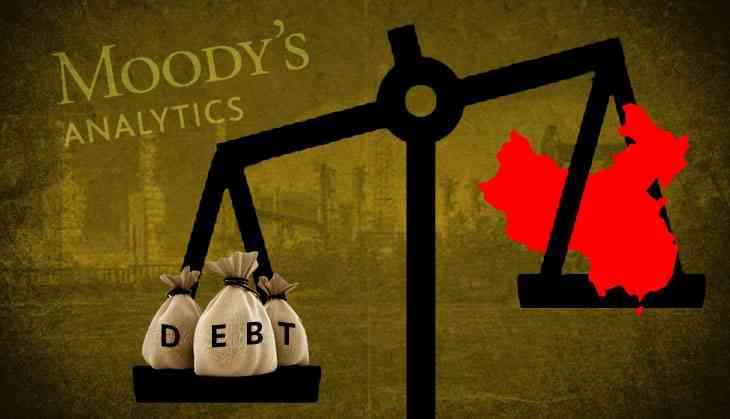Moody's downgrades China's ratings: Is this a result of India's pressure?

Moody's Investors Service has downgraded China's long-term local currency and foreign currency issuer ratings to A1 from AA3 for the first time in three decades. The downgrade – which was long overdue according to some experts – comes in recognition to high level of government debt and the expected slowdown in the Chinese economy in the coming years.
China is crying foul over the credit ratings downgrade and has accused Moody's of using wrong criteria in assessing the economic conditions of the World's second largest economy. Interestingly, it comes a few months after India officially criticised international ratings agencies (including S&P, Fitch and Moody's) for ignoring China's deteriorating economic indicators, especially for overlooking China's increasing credit to GDP ratio.
"China's credit rating was upgraded from A+ to AA- in December 2010 while India's has remained unchanged at BBB-. From 2009 to 2015, China's credit-to-GDP soared from about 142% to 205% and its growth decelerated. The contrast with India's indicators is striking," said India's Economy Survey prepared by the country's chief economic advisor, Arvind Subramanian.
Though China's GDP is 5 times in comparison to India's, the former seems to be loosing steam after growing at above 9% for 25 years.
India on the other hand, has just received the title of the 'fastest growing major economy' in the world from International Monetary Fund and has grown above 9% only thrice in the past 17 years.
Will China's downgrade be followed by India's upgrade?
Though Moody's ratings for China are solely based on the country's ability to meet foreign as well as local currency debt obligations, they have come only after the Indian government started exercising pressure on the ratings agencies to do a fair analysis between two fastest growing economies in the world.
While Indian economy is set to grow above 7% in 2018, the Chinese growth is expected to decline to 5% over the next five years. This means, India can claim for a better credit profile.
Top government economists like Arvind Subramanian and Urjit Patel in India have been pressurising the government to focus on reducing debt over the next 5 years to improve India's chances of a credit upgrade.
The Fiscal Responsibility and Budget Management panel report has prescribed maintaining Centre-state debt ceiling at 60% of GDP over the next 5 years.
Once credit ratings agencies get an inkling of India's ability to achieve these targets, they could be convinced to upgrade India's credit ratings. However, S&P global ratings has ruled out a credit update for India over the next two years.
Challenges remain
Now the most important thing is that despite India getting the tag of fastest growing economy in the world, doubts persist over the authenticity of the data produced by Indian government. Many Indian as well as foreign economists have questioned India's regular change in base year to calculate the growth in GDP as well as industrial production in the country.
Doubts over the government's claims of over 7% growth rate are aggravated when one looks at the number of jobs being created in the economy. As per the latest government data, while the Indian economy was growing above 7% in 2016-17, jobs increased by just 1.1% in the same year, in the 8 important sectors tracked by the labour department.
Such a large difference between job creations and GDP does raises doubts over the authenticity of India's GDP data.
India's banking sector is the Achilles' Heel
Credit crisis all over the world affects the domestic banking sectors. India, too, is trying to avoid its own credit crisis through capital infusion in public sector banks that are sitting over stressed assets of around 10% of their outstanding loans.
Due to capital shortage in the banking sector, credit growth in 2016-17 was 5.1%, lowest in over 60 years.
Fitch credit ratings, in its latest report on India has flagged the issue of capital inadequacy in the Indian banking sector. The ratings agency has said the Indian government's budgeted Rs 70,000 crore capital injection into banks between FY16 and FY19 is unlikely to be sufficient.
Economists all over the world have been watching the competition between India and China for the last one decade. Moving past China in terms of growth will require strong fundamentals and healthy public finance policies supported by equally robust economic institutions. This is a marathon and China getting a downgrade may just be an indicator of the change in gears by the two marathoners.
First published: 25 May 2017, 23:21 IST

